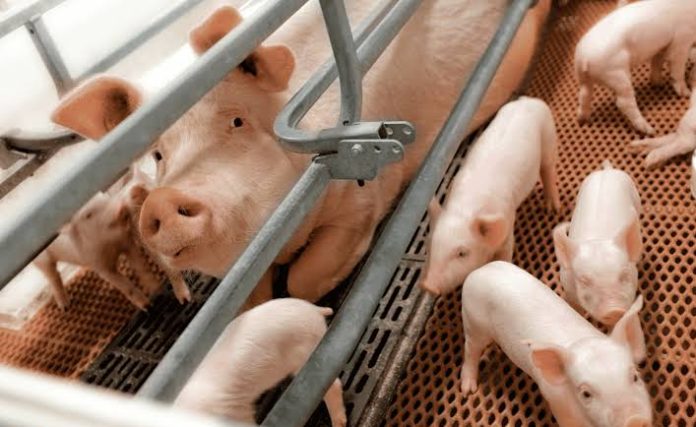FIVE SWINE PRODUCTION FARROWING MANAGEMENT TIPS
1. Implementing swine feeding strategies to encourage sow feed intake in the late evening and earlier morning hours
This will entice the sow to get up earlier and eat more of her ad-libitum feed during the cooler morning hours vs. hotter afternoon and evening feedings. Stimulating the sow early in the day will increase her total daily intake, and thus milk production to achieve heavier weaning weights and rebreeding success.
 Learn More
Learn More
A programmable swine feeding system or frequent human presence can entice a sow to get up automatically at set periods throughout the day and allow nursing bouts after the meal to give smaller piglets more opportunities to get milk from one of the front teats which tend to produce more milk.
As long as the sow is able to stand up at her own free will, preweaning mortality is not likely to be impacted. lactating sows typically stand about 120 minutes per day. A goal of precision feeding is to have her standing at multiple times per day vs. one longer standing bout.
2. Getting the right swine farrowing system and equipment
Strategy for a better swine production management: The heat pad and the Gestal Quattro together, help regulate the temperature of the creep area
Analyze inlet leaks, whether you have gravity or actuated inlets. Granted, we ideally want cooler air dropping on the sow, but absolutely must prevent cool air from dropping over the creep area. This is more important since most USA producers don’t utilize horizontal hovers in the creep area.
The goal is to keep the sow at 68oF and the piglets around 86oF. In farrowing, ideally the heated zone should be uniform, rather than multi-temperate heat placement as in a wean-to-finish barn.
READ ALSO: Preventing Parasite Build up in Pig Farming Systems
3. Avoiding to extra heat the sow
Heat mats have the inherent advantage of providing a rectangular area with bottom-up heat for the piglets, albeit through thermal conduction. The heat is away from the sow so she stays cooler, and the placement discourages the piglets from sleeping in the crush zone near the sow after they have nursed.
READ ALSO: THE CHALLENGES OF PIG FARMING
Heat lamps provide a circular heat pattern via radiative and convective heat transfer with the hotter zone near the center. If lamps are used, try to keep heat from lamps away from the sow zone.
4. Encouraging employees to dress up
Encourage employees to wear long-sleeve shirts to have the rooms be cooler for the sow. Running the room as “a hot nursery” should be avoided, not encouraged. Warm air holds more moisture which leads to increased respiratory stress. Granted, observation vs. a “one-size-fits-all” approach is best to prevent sow and piglet stress.
READ ALSO: General Guide To Pig Nutrition & Feeding
5. Getting sows on the farrowing feeding program earlier
Especially for batch systems, bringing the sows into the room several days before parturition has the advantage of getting them on an eating schedule for farrowing vs. their gestation schedule of one or possibly two meals per day on a limit-fed diet. Stage the heat lamp to turn on at a set period before she is due to farrow.















